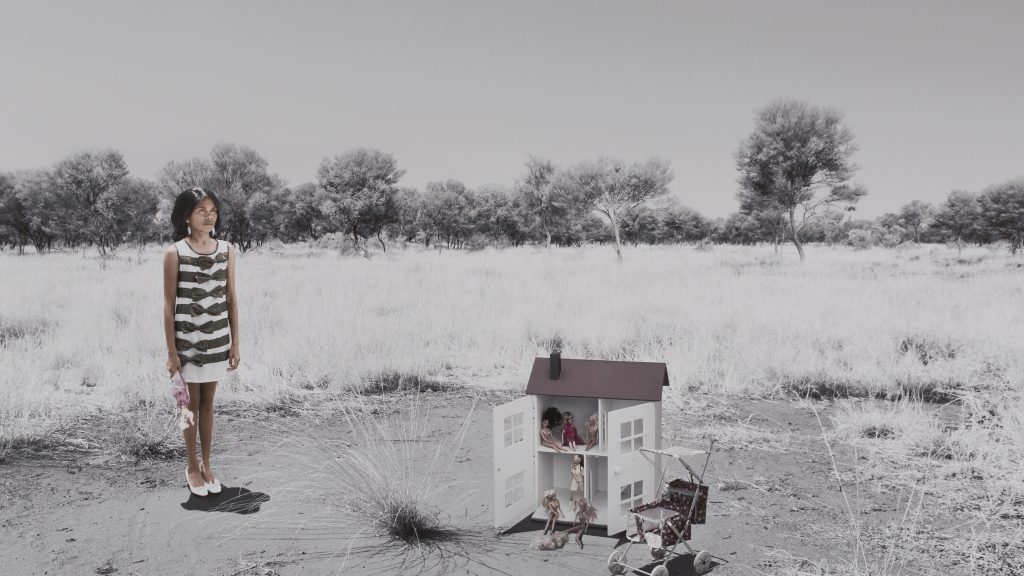
It may surprise you to learn that dollhouses were not originally intended as childhood playthings. The first examples of European dollhouses, or dockenhaus in German, come from the seventeenth century. Meaning ‘miniature house’, these were intended for adults and served as a physical display of wealth, class, and privilege. In Mother (Dolls House), artist Michael […]
Read More…
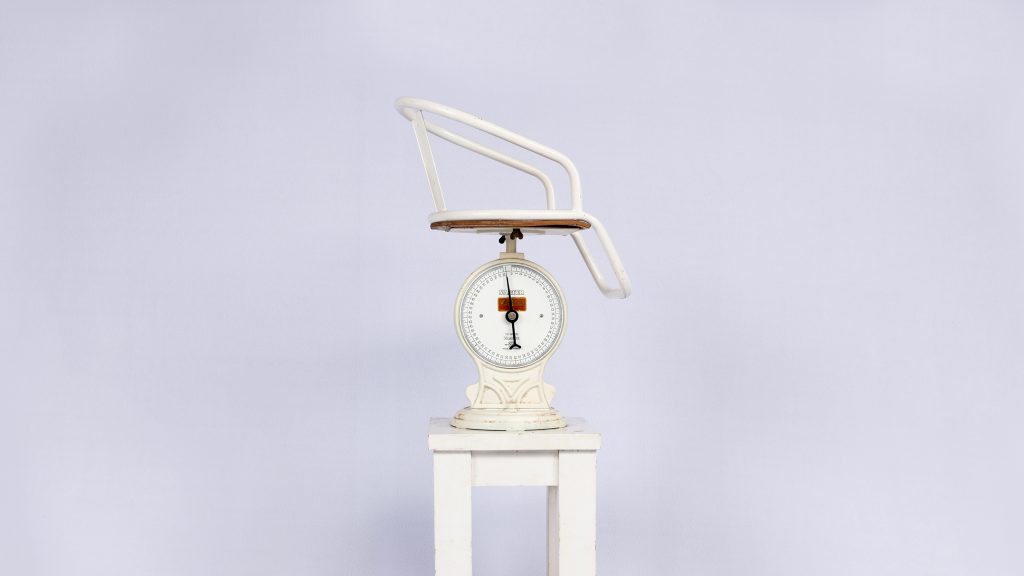
Mothers regularly pushed their prams up the ramp of the local courthouse in 1950s Morpeth. But it was not a judge and jury that they were to there to see—it was a baby health nurse. In this unlikely place from 1954, about ten years after the the building had been closed as a court house, […]
Read More…
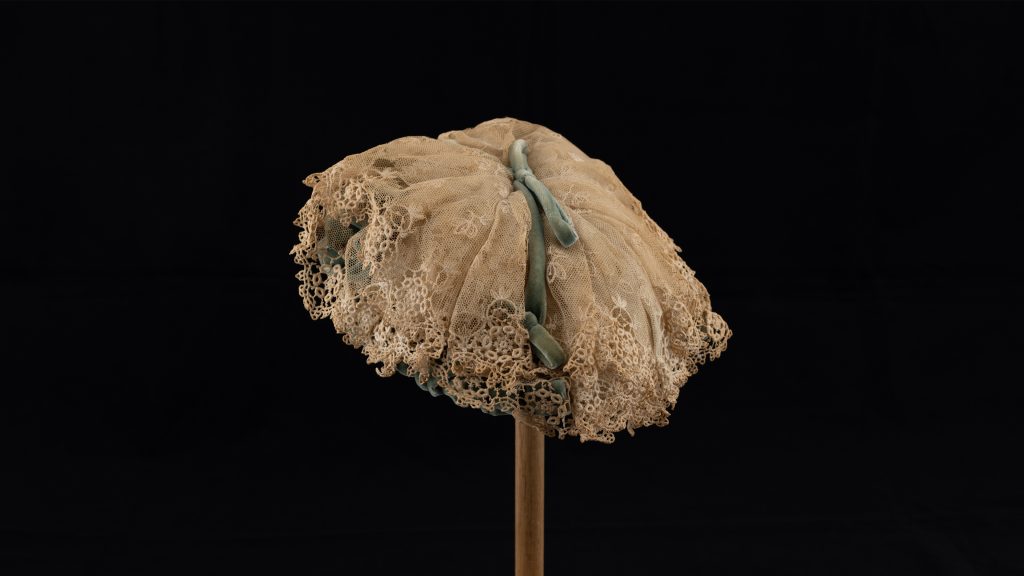
When 20-year-old Lincolnshire born woman Sarah Ingall (1829-1902) married at Morpeth in 1849, she probably accepted, as did most brides of her era, that motherhood would be her natural occupation. During her life Sarah gave birth to nine children, spending over twenty-five years pregnant, breast-feeding babies and raising children. This fancy day cap, with its […]
Read More…
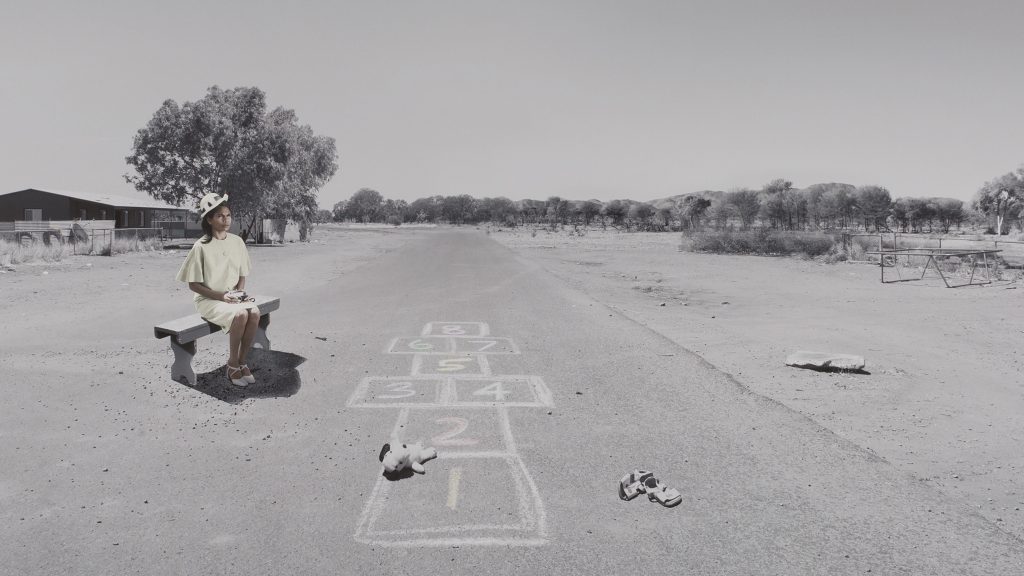
First recorded in the English-speaking world in the seventeenth century, hopscotch as a children’s game conjures images and sounds of laughter, joy, and play-themes that art photographer Michael Cook (1968-) comments on through their visual omission in his work Mother (Hopscotch). Speaking directly to the artist’s personal past as an Indigenous adoptee, and to the […]
Read More…
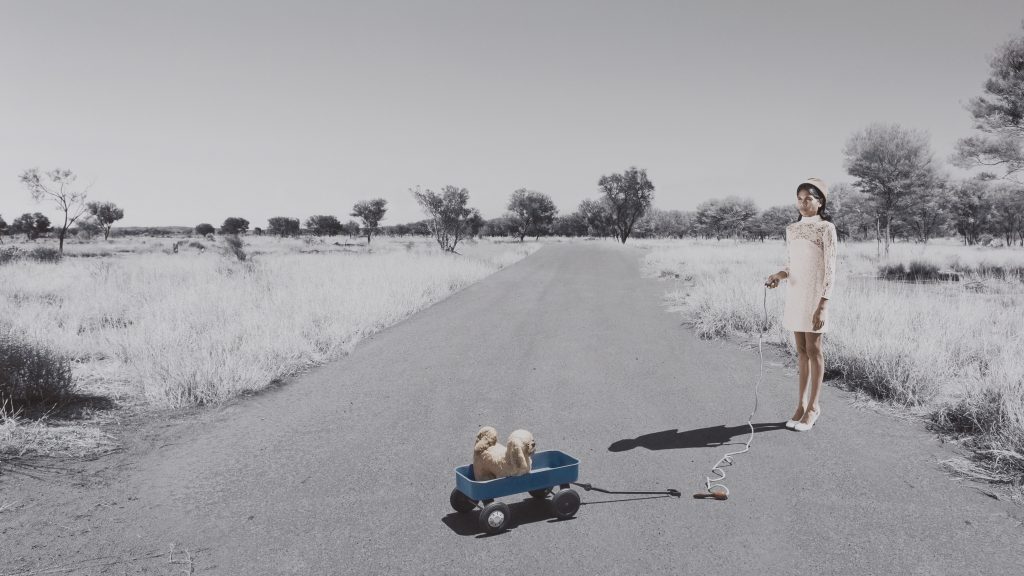
Dusty roads that stretch endlessly through flat, dry scrubland are a defining feature of the Australian landscape. Underneath open blue skies, the environment takes on a surreal, ethereal state, stuck somewhere between the real and the unreal. In Mother (Skipping Rope), artist Michael Cook (1968-) takes that same feeling of intangibility and instability and utilises […]
Read More…
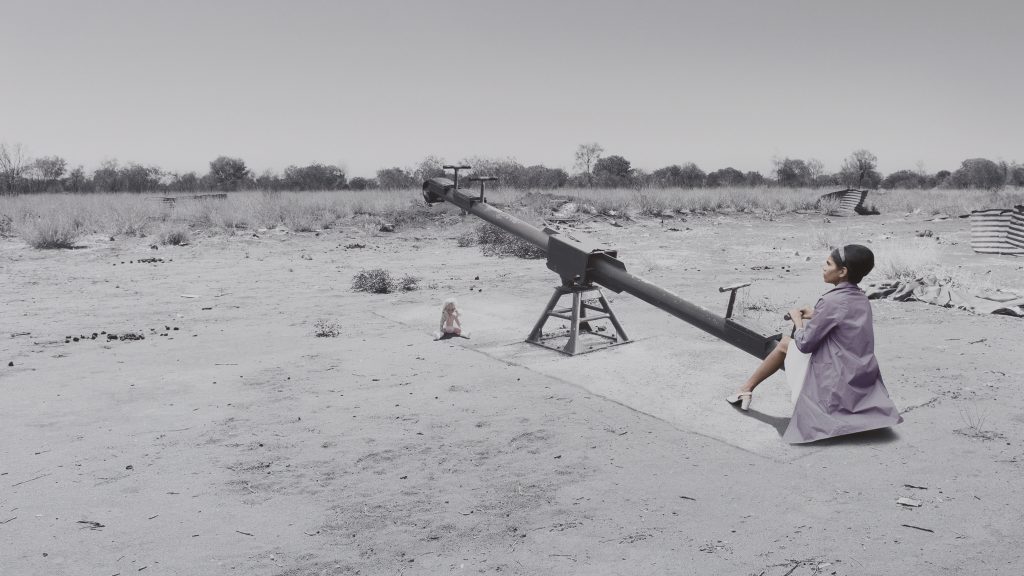
Drought is not a foreign concept in Australia, particularly for our outback communities. The lack of rain and water leads to more than just issues for the land. Societal, communal, and personal conflicts arise, and are often left unresolved, leaving the taste of dust in the same way that a hot wind during drought does. […]
Read More…
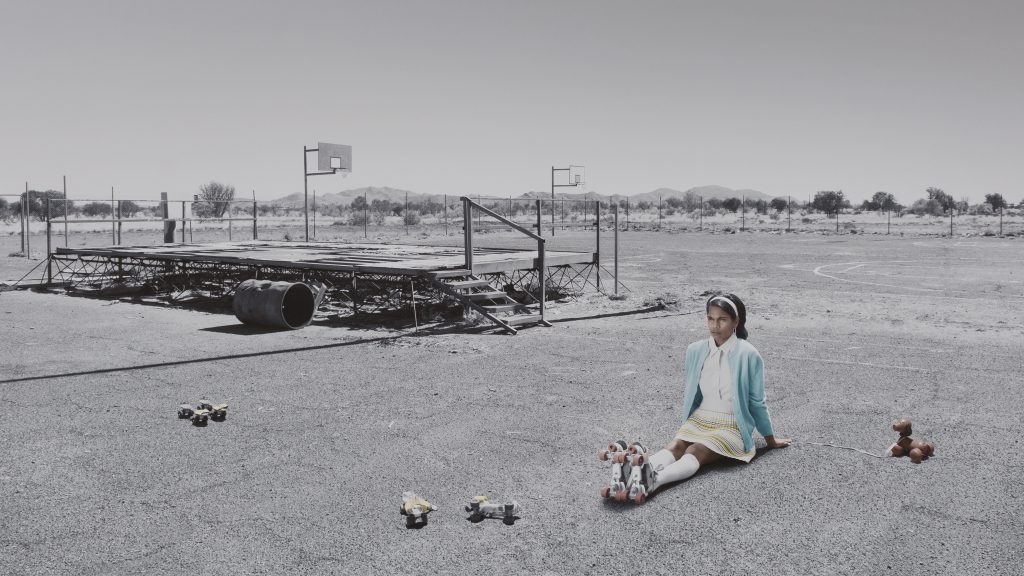
In small communities, multi-use spaces are common. Fields become sporting ovals on the weekend, town halls host markets and meetings, and basketball courts double as a learning ground for bike-riders, scooters, and skaters. Art photographer Michael Cook (1968-) has managed to capture this balance of order and chaos in his image Mother (Roller Skating), combining […]
Read More…
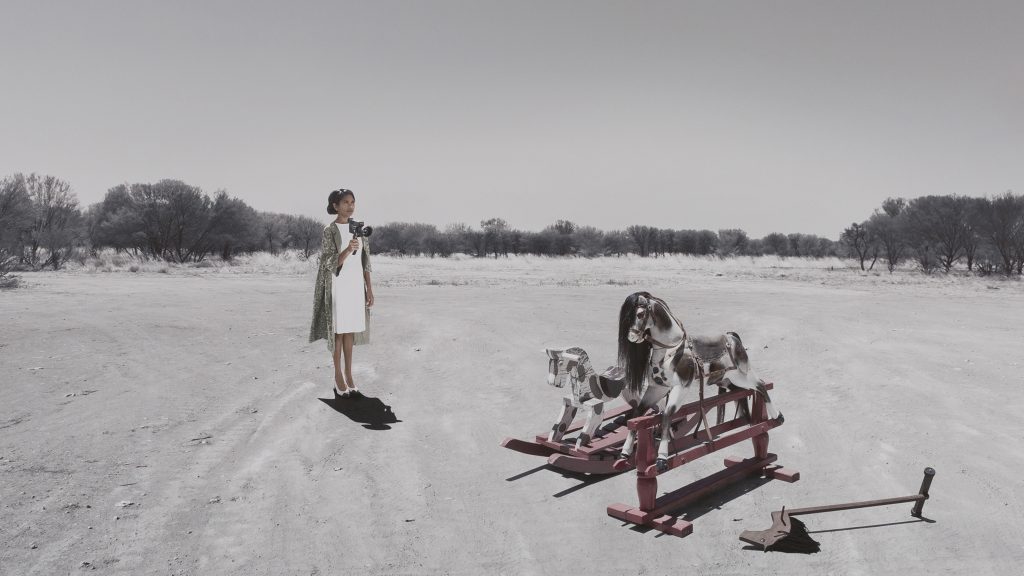
Iconic images of the Australian outback or bush conjure up dust, heat and the thunder of wild brumbies. The strike of their hoofs echoing across vast plains and down mountain sides, the epitome of true freedom. In Mother (Rocking Horse), artist Michael Cook (1968-) evokes this same feeling in a comment on family, connection, and […]
Read More…
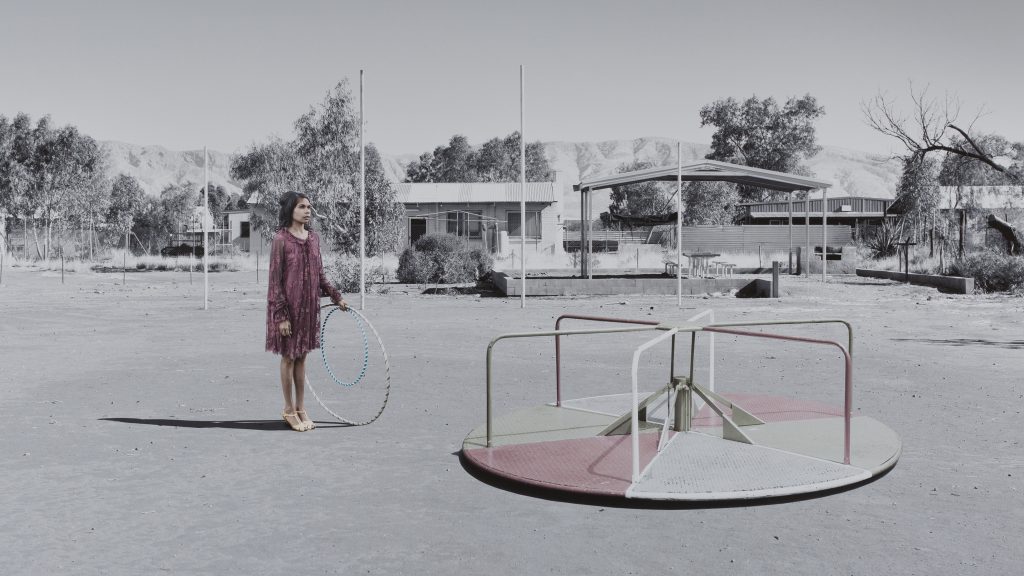
The sundial, the earliest device for time-keeping, indicates the time of day by the position of cast shadow from a vertical object. As the sun moves across the sky, the shadow of the object moves, marking the passage of time. In Mother (Merry-Go-Round), artist Michael Cook (1968-) has utilised the placement of the Mother offset […]
Read More…
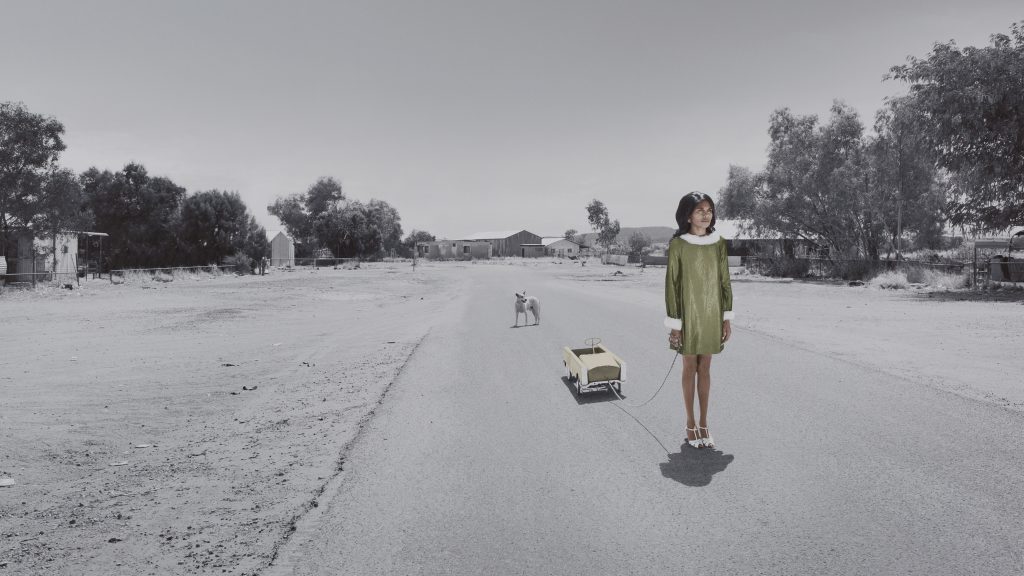
Against a strikingly empty, yet occupied Australian landscape, art photographer Michael Cook (1968-) has managed to capture the heavy, solemn weight of both motherhood and memory in a poignant moment—looking forward but also static, with the past still in easy view. In Mother (Pedal Car), it is easy to see Cook’s own personal journey reflected. […]
Read More…











